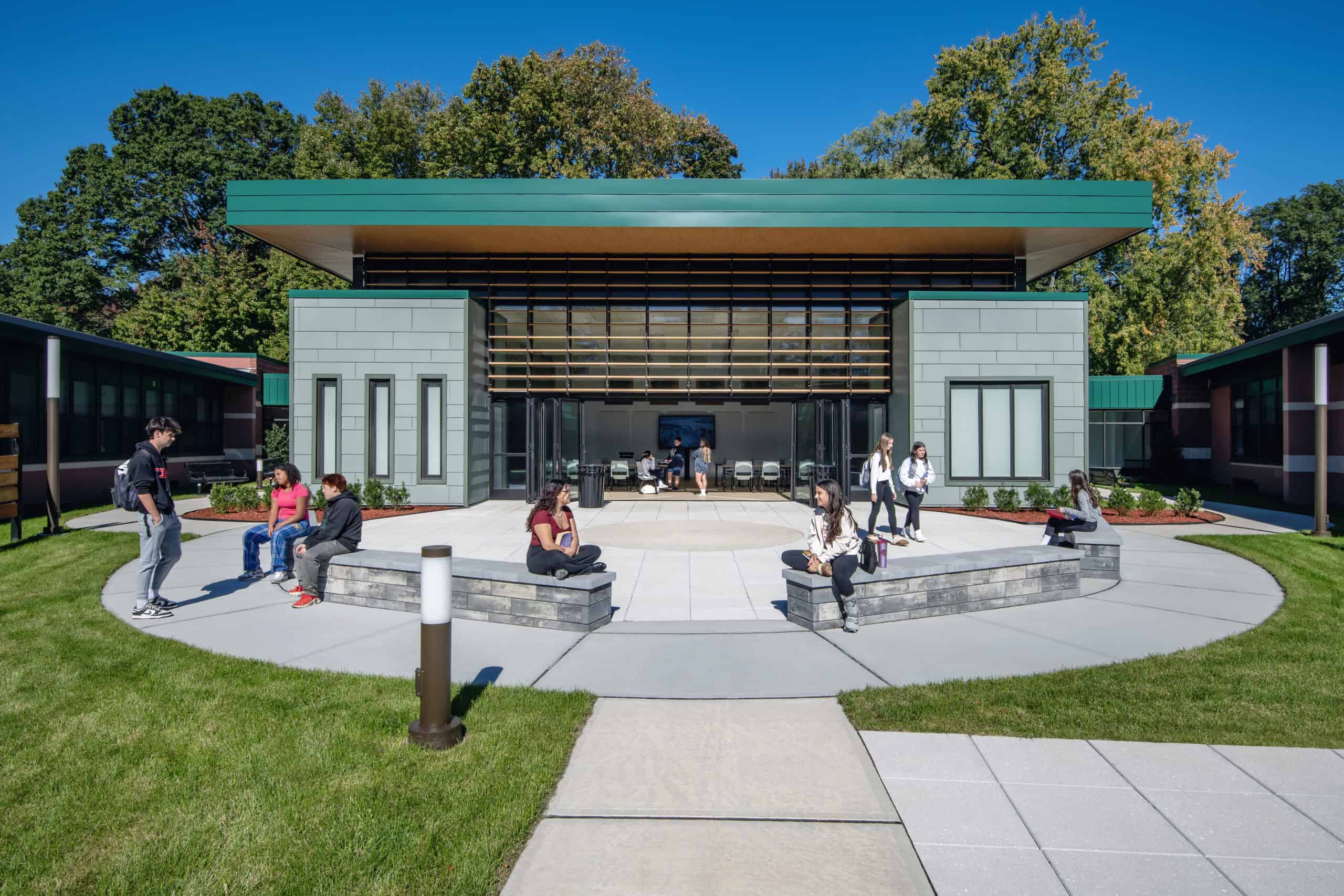Bringing Nature to the Learning Environment

The words “I need to get some fresh air” is a common phrase for a reason. There is something about stepping outside that serves as a mental palate cleanser, helping us organize our thoughts and calm our nerves. In the world of architecture, this is precisely what biophilic design aims to harness. LAN Associates is a full-service architecture and engineering firm specializing in K-12 educational facility design. We sat down with Matt Fink, one of our leading architects, to discuss how LAN uses biophilic design to positively impact student mood, concentration, and physical and mental health.
Watch the video below to hear Matt delve into the world of biophilic design and its positive impact on K-12 education. This webinar will explore how nature-inspired principles have helped LAN create harmonious learning environments and vibrant spaces that foster creativity and promote student well-being and health.
Biophilic design is an architectural design concept built upon the notion that humans have an innate connection with nature. The philosophy is that by incorporating natural elements and patterns into the design of indoor spaces, you can foster a connection with the natural world.
Introducing elements such as natural light, living plants, and natural materials into school environments makes educational spaces more pleasant and welcoming. This can positively impact well-being by reducing stress and anxiety and improving the overall emotional health of students and educators. Having a connection to nature has also been shown to improve physical health and productivity, increase creativity and concentration, and even improve cognitive functioning. With so many of these benefits aligning with the goals of K-12 education, it is easy to understand why biophilic design has gained such traction in the K-12 facility sector.
Maximizing natural light through large windows and skylights is not just about reducing the need for artificial lighting and saving energy. Natural light has been shown to improve occupant mood and create an environment more favorable to learning.
Students need to be able to retreat into a solitary space for reflection and a quiet respite, as well as have spaces away from their desks to form a group in an atmosphere that makes them feel comfortable.
Using natural materials such as wood, stone, and sustainable building materials in school construction connects students with the earth. This promotes a sense of authenticity in the learning space and helps achieve the goals of biophilic design.
Integrating outdoor classrooms and gardens into school design provides students with the opportunity to engage with nature while learning. These spaces can serve as settings for science lessons, art projects, and recreational activities or just a place for students to kick back and relax.
Including plants in classrooms and common areas provides a refreshing and calming atmosphere.
Biophilic design should engage multiple senses, from visual elements like natural colors and shapes to auditory elements like running water or birdsongs.
School design should allow for flexible use of space, enabling educators to adapt learning environments to various teaching styles and activities.
Using sustainable building practices, such as energy-efficient systems and eco-friendly materials, aligns with the principles of biophilic design by promoting environmental stewardship.
Designing and building a school that aligns with biophilic principles requires careful planning. The process must be a true collaboration between architects, educators, school administrators, and other district stakeholders. The result is a unique opportunity to transform the way students learn and interact with their environment.
Keep up to date with the latest LAN news and projects and read insightful articles about the AEC industry

LAN Associates is a full-service engineering, planning, architecture, and surveying firm founded in 1965. We take pride in our ability to address the distinct needs of our large and varying client base.